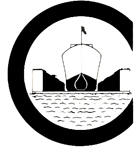Over 150 years of expertise in marine railways and floating dry docks
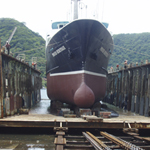 |
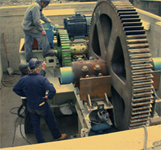 |
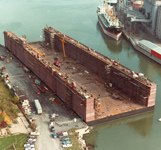 |
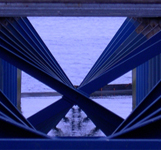 |
|
An
Introduction to Railway Dry Docks
and Transfer Systems
Part
7 - Chains, Rollers & Maintenance
|
3. Side haul railway dry docks |
Steel hauling chains manufactured to accurate pitch and uniform link dimensions are the key hauling cables for pulling railway dry dock cradles. The enormous tensile strength of the chains and ease of connection with special Crandall hauling shackles, as strong or stronger than the chain itself, provide a suitable, durable and economical cable far more satisfactory than the best wire rope. These chains, fitted over alloy steel chain wheels having a small pitch diameter, permit hailing very heavy loads with relatively small hauling machines. It is possible by caliper measurements to determine the strength and corresponding safe live load that a chain can pull at any stage of wear. This ability to measure the strength is a major advantage that chain ahs over wire rope. If properly lubricated with thin or medium-weight oil that can flow into the grip of the links, a chain can have its useful life doubled. Experience has shown that some steel chains are capable of pulling capacity loads even after 30 years of continuous use. It is particularly important to protect chain from abrasion caused by sliding through sand, gravel or silt. Before the adoption of metal chain slides, chains ran in wooden troughs; sand would become embedded in the wood causing accelerated chain wear. The metal slides cover only the track cross ties, allowing debris to drop away from the chain. In some installations, it may be wise to provide a means for washing the sand off the incoming chain with fresh water. A chain swivel with grease-packed ball bearings is used between hauling and backing chains to permit a loaded chain to rotate freely and prevent backing chain twist from being transmitted to the hauling chain. In the absence of such a device, excessive twist could cause a chain to jump its sprocket wheel. Present-day roller systems consist of steel-angle frames with welded-in malleable iron bushings to hold the roller pintles. The holes are punched or drilled with extreme precision, resulting in greatly reduced roller friction, elimination of roller flange failure, reduction or elimination of cradle surging, and, most important, reduction of the chance of derailment. The connector used between frames allows proper self-alignment to take place and makes it easy to connect and disconnect frames under water. The reason for using rollers for railway dry docks of any significant capacity is that a friction coefficient as low as 1-2 percent can be achieved. Small railways of less than 150 tons' capacity are usually provided with wheels rather than rollers. The necessity of having to have divers retrieve slipped roller frames is thus avoided, and steeper track gradients are possible. On the other hand, wheels of the fixed-axle type have at least 2-1/2 times the friction of rollers and so require heavier chain and more powerful machinery. It is important to maintain railway dry docks properly to avoid derailment or structural failure due to excessive wear and deterioration caused by corrosion, marine borer attack, and rot. Preventive maintenance also extends the economic life of the equipment. It is wise to have a regular program of maintenance and to have periodic inspections by qualified dry dock personnel. The practice of sandblasting steel vessels presents a serious problem in railway dry dock maintenance. It has been largely overcome by sheathing the cradle decks to prevent the sand from falling to the ways below. It is still necessary, however, to remove sand where it has accumulated along the side of the track and beyond the fantail of the cradle. Another design feature that is useful for flexible dry dock operation also contributes to making maintenance more practical. A divided cradle allows docking one large ship or two smaller craft. In the latter case it is often possible to have one ship docked for a long period on the forward section, while the aft section serves for short-period hauls. For larger railways in locations having small tides, the divided cradle solves the problem of cradle maintenance, since it is a simple matter to float away the bow cradle and then haul the after cradle clear of the water. Dividing the cradle does require that hauling chains be secured to the forward end of the outshore cradle and that the inshore cradle be held by latches, but the cost of the extra chain and anchoring system may well be worth while.
|
Progress...the result of never being satisfied
Crandall
Dry Dock Engineers, Inc.
Established 1854
(888) DRYDOCK crandalldd@aol.com
